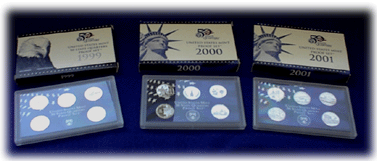1852
Quarter Dollar Obverse Side |
The
more a coin is wanted by people the higher the value or worth
is. If a coin is hard to find and its condition is good, then
its value is greater than a coin that is plentiful and its condition
is poor. Collectors grade their coins to determine its value.
|
1852
Quarter Dollar Reverse Side |
For example a United
States Mint was located in the city of New Orleans, Louisiana from 1837
to 1909. It made many types of coins but did not make a lot of them. So
if you have a coin with the mintmark "O"
for New Orleans, it is worth a lot. Add it to your collection!
Grading doesn't mean a coin gets a report card. The grade of a coin means
its condition. Until 1977 most grading of coins was done by a numismatist's
knowledge and observation. Then The
American Numismatic Association reviewed all the different ways of
grading and came up with a set of standards that could be used by everyone.
They were published in a book called The Official A.N.A. Grading Standards
for United States Coins. The standards have been changed very little
over the years and are used for grading coins today.
| The
5 grading standards are: Uncirculated describes a new coin that has never been used. Details on the coin are sharp and clean with no signs of wear. Extreme Fine is when only the highest points of the design show any wear, and all fine details are clear on the coin. Very Fine is where there are signs of wear, but the design is clear on the coin. Fine describes a very worn coin. Its fine details and lettering are worn away, but it still looks good. Very Good describes a coin that is quite worn, and it might even be a bit scratched but shows no other damage, such as dents. |
 |
|
| Other types of coins minted or made are proof coins and sets. Proof is not a grade. It means how the coin is made. Proof coins were first made to "prove" the design was correct. Today proof coins are polished before they are struck. Striking is one of the steps when making a coin. It means the blank coin is stamped with a design. Striking is done two times to proof coins. This special process makes the coin look very shiny and the design beautiful. A proof set is a complete set of proof coins made in a year. You can purchase proof coins and sets from the U.S. Mint. These are photographs of the 1999, 2000, and 2001 state quarter proof sets. |
Sometimes the U.S.
Mint makes a mistake when making coins. Most collectors look for coins
with mistakes, because they are not very common and are valuable. Take
a very close look at your coins to see if they have any of the mistakes
below.
| Here
are some examples of mistakes that you can find on a coin. Brockage is when the obverse design appears on the reverse side of the coin. Edge Errors are when the coin has the wrong letters on it. This is just one example of this type of mistake. Mintmark Errors are when the mintmark appears twice on the coin or the coin is missing the mintmark. These are just two type of mintmark errors. Mule is a coin with a different type of coin on each of its sides. An example of this is a nickel on the obverse side and dime on the reverse side. This would be neat to see! Numeral Errors are coins with missing numbers, wrong dates, numbers that are not in the correct order, and numbers that are not in the correct place. Unstruck Planchet is a coin that leaves the mint without a design on either side. This is known as a "blank." There are also other types of mistakes that are made by the U.S. Mint. |